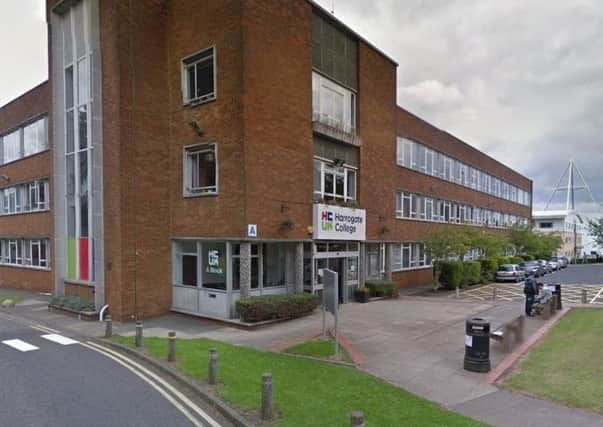College Life column with Harrogate College principal Debra Forsythe-Conroy


In the last few years schools, colleges and training providers have been forced to close community education and outreach centres, due to budget cuts and a decline in demand for formal qualifications. This provision is however starting to see a renaissance with adults seeking new career options or accessing learning for leisure and for those aged 16 –18 living in the rural parts of the county providing access to education and training provision is now becoming a challenge.
To meet some of these challenges, the college has a well developed travel plan, which encourages staff and students to travel to college by walking, cycling, public transport and car sharing.
Advertisement
Hide AdAdvertisement
Hide AdCycling in particular has been encouraged following the £6m redevelopment of the college, which has included the construction of a new cycle shelter with CCTV security, lockers and shower facilities.
The college is also well served by a good rail network with direct train services to Hornbeam Park Railway Station just a three minute walk away from the campus, with a regular service from Harrogate, Leeds, Knaresborough and York available.
During the campus re-development concern was raised about potential loss of car parking. However the college continues to have a large car park that is used by staff, students and visitors and is not at capacity.
However for students from rural areas transport remains an issue with many travelling more than two hours per day to access education and training.
Advertisement
Hide AdAdvertisement
Hide AdIn many rural areas local colleges have worked in partnership with schools to transport students into study. In Harrogate this is of particular importance as from September 2016 the local authority has withdrawn financial support for students attending denominational schools, hence a number of established bus routes have too been withdrawn. Careful consideration has to be given when deciding on the routes to offer free transport.
Typically this will be influenced following feedback from school and college open events and using LMI and college data ensuring that areas which are not served by public transport are well supported with dedicated free and subsidised transport.
The emerging trend would suggest that students studying at level three and above are more likely to attend colleges further away from home and are prepared to travel.
This accords with one who is becoming a more autonomous learner as they prepare for the world of work. Sometimes students wish to attend their first choice college, but are forced to attend at another institution due to travel constraints, local authority rules and financial support.
Advertisement
Hide AdAdvertisement
Hide AdMany colleges have introduced student transport support ranging from bursaries, reduced travel tickets, reimbursement for fuel, student transport which ranges from minibuses travelling daily from rural areas to full size coaches transporting students cross county.
It is also time to consider learning options and to embed information technology as a delivery mechanism for blended learning training packages. This approach however is wholly reliant on the maturity of students and their dedication to learn and self-study discipline. It is therefore likely to be best suited for older learners and as always this style of learning is reliant on the capabilities of information technology infrastructure and the connectivity in the rural areas.
Harrogate College has developed a five year transport strategy.
This strategy reduces the number of cars coming into the area, reduced air and noise pollution and for those who chose to cycle, improved health through active travel.
Advertisement
Hide AdAdvertisement
Hide AdThe need for this is further endorsed when the proposals regarding growth in areas of the district are applied. This includes the proposed development of the Flaxby site, the numbers of ambitious building projects in Spofforth, Wetherby and further afield, all indicating an increase in the numbers of potential students moving into the area.